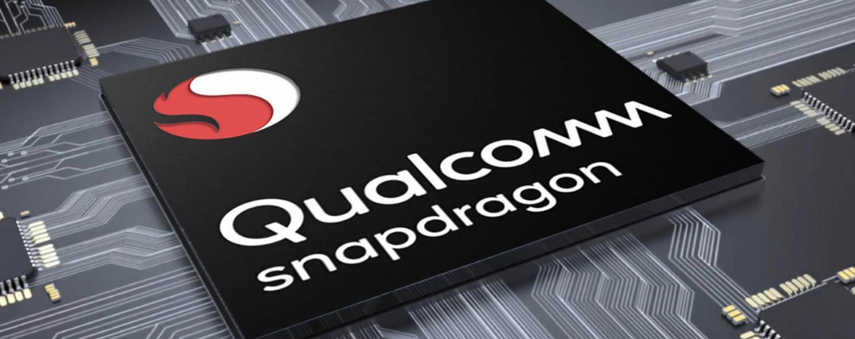Qualcomm’s new chip set for built-in 5G

Credit: Mobile Syrup
With the Qualcomm Snapdragon 855 chip already implemented in so many smartphones, rumours are circling that the next version, the 865, has integrated 5G modem.
It’s amazing what you can fit on a chip. As our demand for technology expanded, the devices themselves have shrunk. Computers became personal; phones became mobile.
It is a prophecy coming true. In 1965, Intel founder Gordon Moore hypothesised that every two years, it’s possible for an engineer to double the number of transistors they could fit on a board. Computers used to fill entire rooms and now we’re at a point where everyone has one in their pocket. The growth rate of smartphones is slowly decreasing, but the need for smaller, smarter chips is still as important as ever.
Qualcomm’s developments in the system-on-a-chip (SoC) world perhaps don’t get the credit they should for the company’s role in mobile innovation. Qualcomm’s relationships with leading mobile manufacturers are fantastic and the industry holds the company in extremely high esteem. Qualcomm set the bar for battery life on a phone, was integral in projects such as HTC’s Sensor Hub and even smartwatch wearables have integrated Snapdragon chips.
An almost silent giant in the tech world, Qualcomm has a command that few others can boast. Their next chip, the Snapdragon 865, could be another groundbreaking step for the company.
What’s so great about the Qualcomm Snapdragon 865 chip?
One of the world’s first 5G phones, Samsung’s Galaxy S10 uses Qualcomm’s Snapdragon 855 chip. The Snapdragon 855 powers a host of high-end Android 5G smartphones, but the chip itself doesn’t provide the connectivity. 5G connectivity instead requires additional chips from Qualcomm.
The use of 5G chips in IoT devices is hugely significant.
As Qualcomm omitted 5G from the Snapdragon 855, handset manufacturers could offer a 5G version and a 4G version of the same device. That’s exactly what Samsung did, for example. The Snapdragon 865, however, is reported to be coming out in a 4G and 5G version.
These two versions are rumoured to be named Kona and Huracan, though details are unclear so far on which one is which. Both chips have LPDDR5X memory – an upgrade on the previous model’s LPDDR4X RAM – and the chip will come equipped with faster data chips. The chips will come with X55 modem, enabling connection right down to 2G, as well as more advanced networks.
The Snapdragon X55 has 7-nanometer manufacturing technology. Snapdragon X50 uses older technology, but 7-nanometer tech allows for more efficiency on a smaller chip. Technology may not be getting smaller anymore – phones have stopped trying to get smaller and have scaled up again to challenge tablets – but this is still significant. The use of 5G chips in IoT devices is hugely significant.

It’s inevitable that in the next few years, IoT technology will begin to incorporate 5G as much as Wi-Fi. There are significant benefits to this too: given the size and power of 5G in comparison to its fourth generation predecessor, the amount of data that it would take to complete a simple task like switching on a light would be minimal. On a grander scale, 5G offers huge coverage that Wi-Fi can’t possibly manage.
The Snapdragon 865 chip is one of the first chips to capitalise on these possibilities. The first chips will be included in handsets come 2020.
What does this mean for Qualcomm’s competition?
Intel was ahead of the curve when Moore’s Law laid theoretical foundations for the technology world in 1965. Unfortunately, it looks like the giant has fallen behind Qualcomm in the race for 5G modem.
Recently, Intel auctioned off a selection of patents. 6,000 of these patents were related to 3G, 4G and 5G mobile modem standards, with 1,700 patents related wireless implementation technologies. Intel CEO Bob Swan claimed that his company was “assessing our options to realise the value we have created” in 5G products following Apple’s decision to invest in Qualcomm products.
Apple brokered a six-year global patent licensing agreement with Qualcomm, with an option to extend it for another two years. The deal was a surprising conclusion to a string of legal battles with Qualcomm, leaving the chip maker in a good position.
Unless Apple turn back on this deal and begin making their own chips, Qualcomm have little competition, thanks to Intel’s retreat. Qualcomm’s chips use the ARM RISC instruction set. The company have recently invested in open-source RISC-V start-up SiFive, which is simple to add custom instructions to.
Qualcomm’s dominance in the chip world, combined by the development of their technology, means a lot for IoT. It should become even easier in the imminent future for Internet of Things devices to incorporate Snapdragon chips that provide speedier connections to the internet than ever before.
